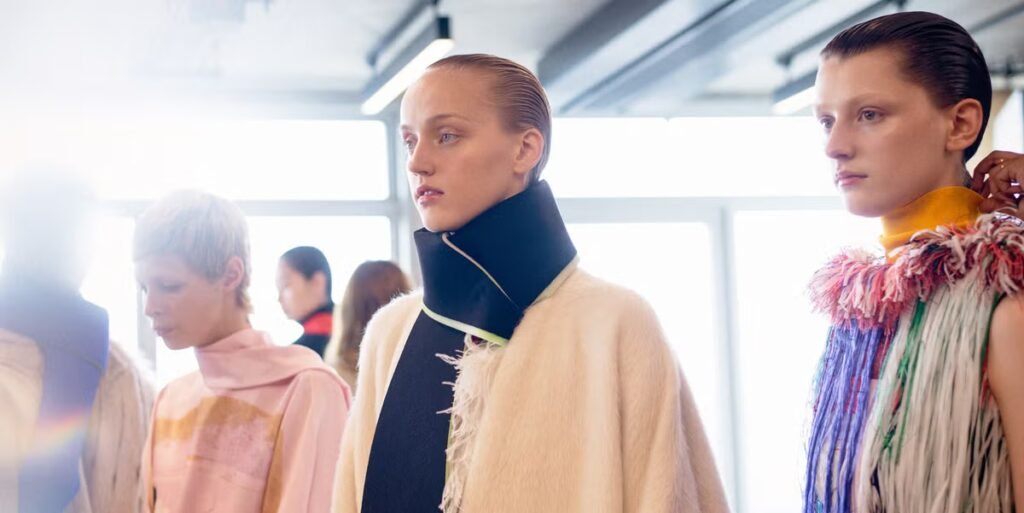‘Every artist should have a cheap line.’ This was a mischievous aphorism of the late artist and dear friend of mine John Baldessari, a godfather of conceptualism and of Los Angeles’ artist community. We printed John’s cheeky quip on matchbooks, and distributed them at a book launch for his writings in 2014… I remember we laughed about how perfectly the tiny object captured his dry wit.
What does this have to do with art and fashion? Well, quite a lot actually. The double meaning of ‘cheap line’ as both a jab and a nod to diffusion brands, John’s joke was a bit of practical wisdom for artists about how to scale access to ownership of their work, and which echoed dynamics of luxury branding. He believed artist editions, which can be prints, multiples or other works that circulate widely, derived their aura from the unique ‘primary’ artworks of an artist’s oeuvre, much like how jeans and perfume are bestowed with glamour from couture. This tension between the rare and the reproducible is ever evolving, like the relationship between art and fashion, from generation to generation.
Baldessari’s provocation holds true today: every artist does have a ‘cheap line’, whether through editions, collaborations, social media or the afterlife of their work if it permeates the collective imagination. Fashion and art share this synergy – from couture to ready-to-wear, from masterpiece to print – the borrowing and extending of aura from one to the other.
Read Next
At Serpentine, we are always investing in ways to connect art to other cultural forms, including fashion. In the spirit of Baldessari’s words, we view accessibility, which goes hand in hand with technology, as a means for amplification, not dilution. Our Summer Party is a good example of this ethos. We bring together established institutions and young talent – Harris Reed and Chet Lo are among the young London designers who have made their mark at these gatherings – to circulate that aura through live encounters. Meanwhile, fashion houses from Prada to Dior have embraced new forms of patronage, harnessing the power of art by commissioning projects that extend their agency beyond clothing into installations, architecture and cultural programming. Fashion now operates as an art platform in its own right. Maison Margiela’s launch of ‘Line 2’, a channel for artistic and cultural projects, emphasises community over products.
I first experienced the fluidity between the two worlds of fashion and art at Ultimo in Chicago in the 1990s, when I was introduced to an early Rick Owens collection. Around the same time in Los Angeles, one of my earliest brushes with nightlife was at Michèle Lamy’s legendary hub for creativity and style: Les Deux Café. These parallel discoveries left a mark. Owens’ shop at Place du Palais Royal sits beside one of my favourite public artworks, Daniel Buren’s Les Deux Plateaux. Its striped columns echo Owens’ architectural silhouettes – an art-world staple, and an example of how symbols and ideas migrate freely between fashion and art.
My job brings me close to artists I admire for their style as well as their work, including architect Sumayya Vally, painter Lynette Yiadom-Boakye and David Hockney, whose paintings will be on view at Serpentine North next summer. Hockney, like Richard Rogers, is a forever sartorial hero, even if his fearless love of colour could not be further from my chosen palette. I have a firm belief in the utility of an all-black uniform; it allows me more time to think, and more freedom in my suitcase when I travel. You never know what a day in the art world might hold – walking an art fair, an impromptu studio visit or attending a black-tie event – and the uniform works for all of it. I call this approach ‘carry-on only’, a metaphor for editing down to life’s essentials.
Formal constraints can produce poetic results – I’m always impressed by how much creative variety is available within monochrome. Phoebe Philo infuses minimalism with an uncanny edge; Pieter Mulier’s Alaïa moves seamlessly from day to night; Issey Miyake, from a sculptural standpoint (and for packing into a roller bag), will always be an essential; and Nadège Vanhee’s Hermès evokes timeless elegance grounded in femininity. These designers embody restraint and inventiveness, qualities that inspire my wardrobe, my life and work. Another figure I admire is Duro Olowu, a true maestro, whose space in London feels more like a gallery than a store. As well as a place to buy clothes, it’s where people come to learn from Olowu himself, if they’re lucky enough to find him there.
Style, like art, draws power from its rarity, but also from its aura – the way it lives with us every day emanates outward and circulates beyond. This is the spirit with which we approach our work at Serpentine: to create conditions where art moves fluidly – through public space, digital platforms, collaborations – meeting people wherever they are.
ELLE Collective is a new community of fashion, beauty and culture lovers. For access to exclusive content, events, inspiring advice from our Editors and industry experts, as well the opportunity to meet designers, thought-leaders and stylists, become a member today HERE.



